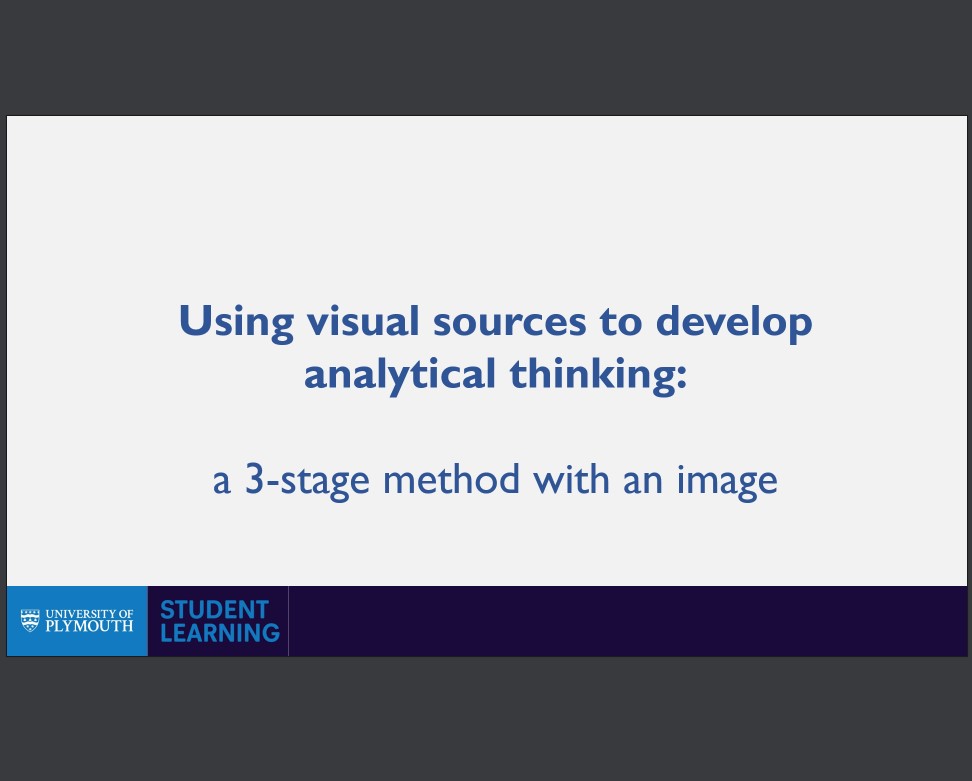The 3-stage method breaks down academic writing into three elements: description, analysis, and critical evaluation, and asks the students to work with an image. In the first stage, students describe the image in detail and systematically extract all its elements – this is about paying attention to detail. In the second stage, they explain their interpretations – this develops the skill of analysis. Finally, in stage three, they ask questions that help to verify the accuracy of these interpretations – this stage emphasises the importance of research and evidence for the claims made in stage two. Each stage involves interactive work as the students discuss their findings in pairs or small groups. After each discussion, they are shown an example of a descriptive, analytical and critical analytical paragraph, with colour-coded writing so they can see the different tasks being smoothly integrated into the final piece. Finally, they look at structuring the essay into coherent paragraphs and try applying the method to different sources.
The 3-stage method was originally developed in 2016, in collaboration with Sara Erskine, and in later years modified and expanded based on students’ feedback at the University of Plymouth.
The workshop is particularly well received among Arts and Humanities students but can be easily adapted to other disciplines by using a different image or even an idea/concept/text. The most important principle is to demystify the concept of analysis by breaking it down into three clear stages (description, analysis, critical evaluation).
The slides can be used in workshops (small or large groups) and can be supported with the handout. This example PDF poster highlight potential use for one-to-one sessions.



Lauren Cross –
This workshop plan has given me some fresh and concrete ideas for how to approach teaching visual analysis and critical thinking. Thank you, Alicja!